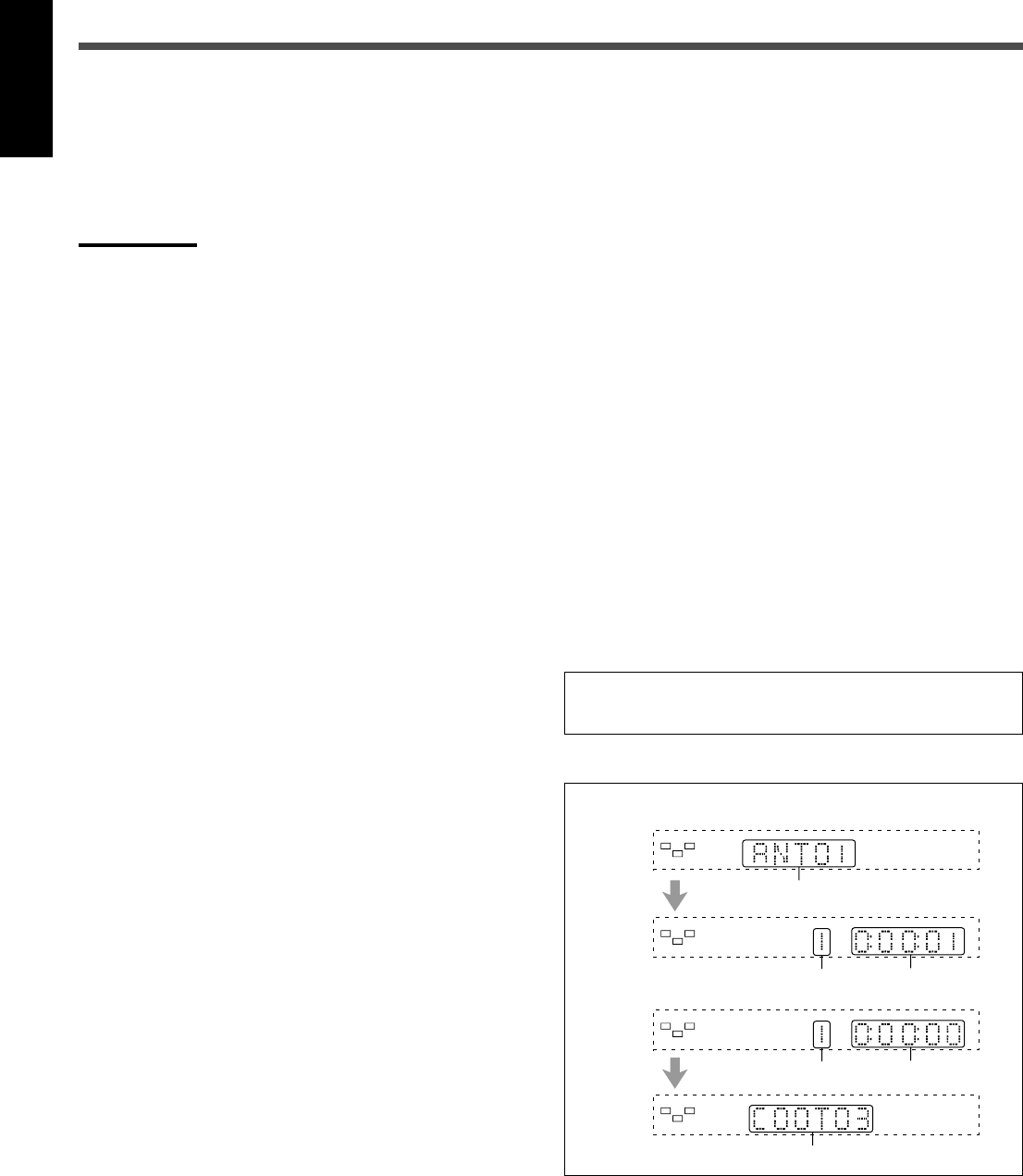
30
English
MP3/JPEG Introduction
This system is incorporated with an MP3 decoder and JPEG
decoder. You can play back MP3 tracks (files) and JPEG files
recorded on CD-Rs and CD-RWs.
• Notice that “files” and “tracks” are used interchangeably in the
MP3 explanation.
Notes:
This system can play back a disc containing both MP3 and JPEG
files.
What is MP3?
MP3 is an abbreviation of Motion Picture Experts Group (or MPEG)
Audio Layer 3. MP3 is simply a file format with a data compression
ratio of 1:10 (128 Kbps*). That means, by using MP3 format, one
CD-R or CD-RW can contain 10 times as much data volume as a
regular CD can.
* Bit rate is the average number of bits that one second of audio data
will consume. The measuring unit used is Kbps (1000 bits per
second).
To get a better audio quality, choose a higher bit rate. The most
popular bit rate for encoding (recording) is 128 Kbps.
MP3 File Compatibility
• This system can only read MP3 files that are recorded in the
format that is compliant with ISO 9660 Level 1 and Level 2, and
Joliet.
• The system can read or play MP3 files only with the extension
code—“.mp3”.
Disc structure—How are MP3 files recorded
and played back?
“MP3 files (tracks)” can be recorded in “directories (or folders),” in
PC terminology.
During recording, the files and directories can be arranged in a way
similar to arranging files and folder/directories of computer data.
“Root” is similar to the root of a tree. Every file and directory can be
linked to the root.
In compliance with ISO 9660, the maximum allowable depth of
nested directories—so-called “hierarchy”—is 300 (inclusive of the
root).
Playback order, files search order, and directory search order of the
MP3 files recorded on a disc are determined by the writing (or
encoding) application; therefore, playback order may be different
from the one you have intended while recording the folders/
directories and the files.
Note on MP3 discs
MP3 discs (either CD-R or CD-RW) require a longer readout time.
(It differs due to the complexity of the directory/file configuration.)
For in-depth information about a disc to be played back, see
“Disc Introduction—DVD/VCD/SVCD/CD” on page 21.
What is JPEG?
A still-picture data compression system proposed by the Joint
Photographic Expert Group, which features small decrease in image
quality in spite of its high compression ratio.
Disc structure
On a JPEG disc, each still picture (material) is recorded as a file.
Files are usually grouped into a folder. Folders can also include
another folders, creating hierarchical folder layers.
• A maximum of 5 000 images can be stored on one CD.
• If there is any type of files other than JPEG files in a folder, those
files are also counted in the total number of 5 000.
NOTES on JPEG discs
• JPEG discs (either CD-R or CD-RW) require a longer readout
time. (It differs due to the complexity of the directory/file
configuration.)
• When making a JPEG disc, select ISO 9660 Level 1, Level 2 or
Joliet as the disc format.
• This system supports “multi-session” discs (up to 99 sessions).
• This system cannot play “packet write” discs.
• The system can read or play JPEG files only with the extension
code—“.jpg”.
• Some JPEG discs may not be played back because of their disc
characteristics or recording conditions.
MP3
Elapsed playing
time
Fixed to “0: 00: 00”
JPEG
Playback Information on the display
L R
SW
L R
SW
L R
SW
L R
SW
File No.
File name
File No.
File name
EN_30_33_TH_A25[C].p65 03.9.22, 10:03 AM30


















